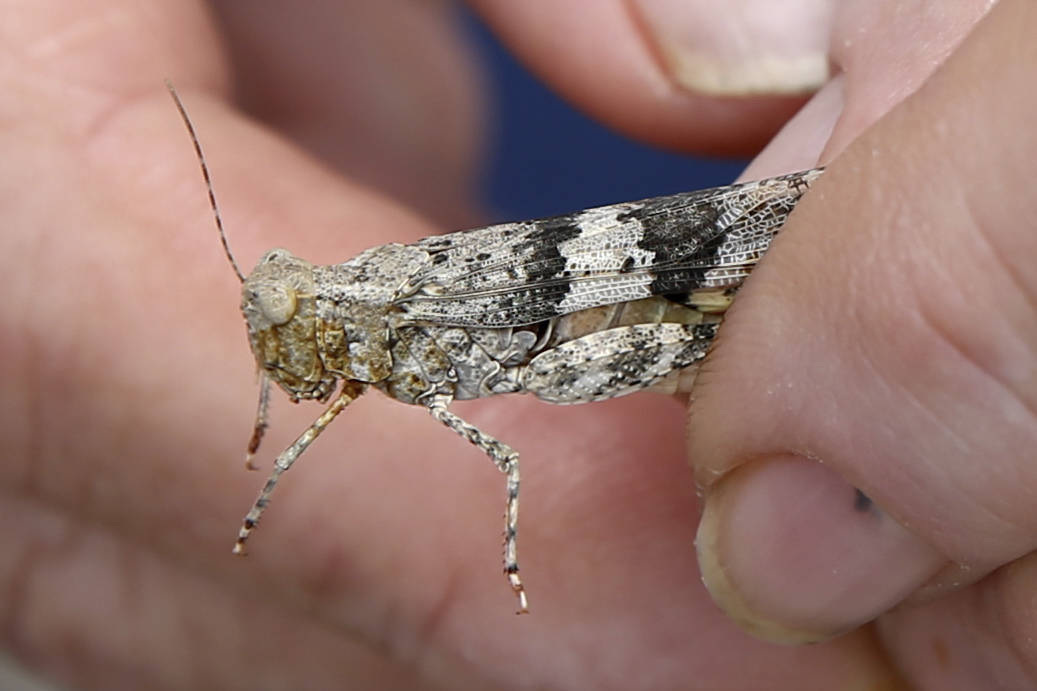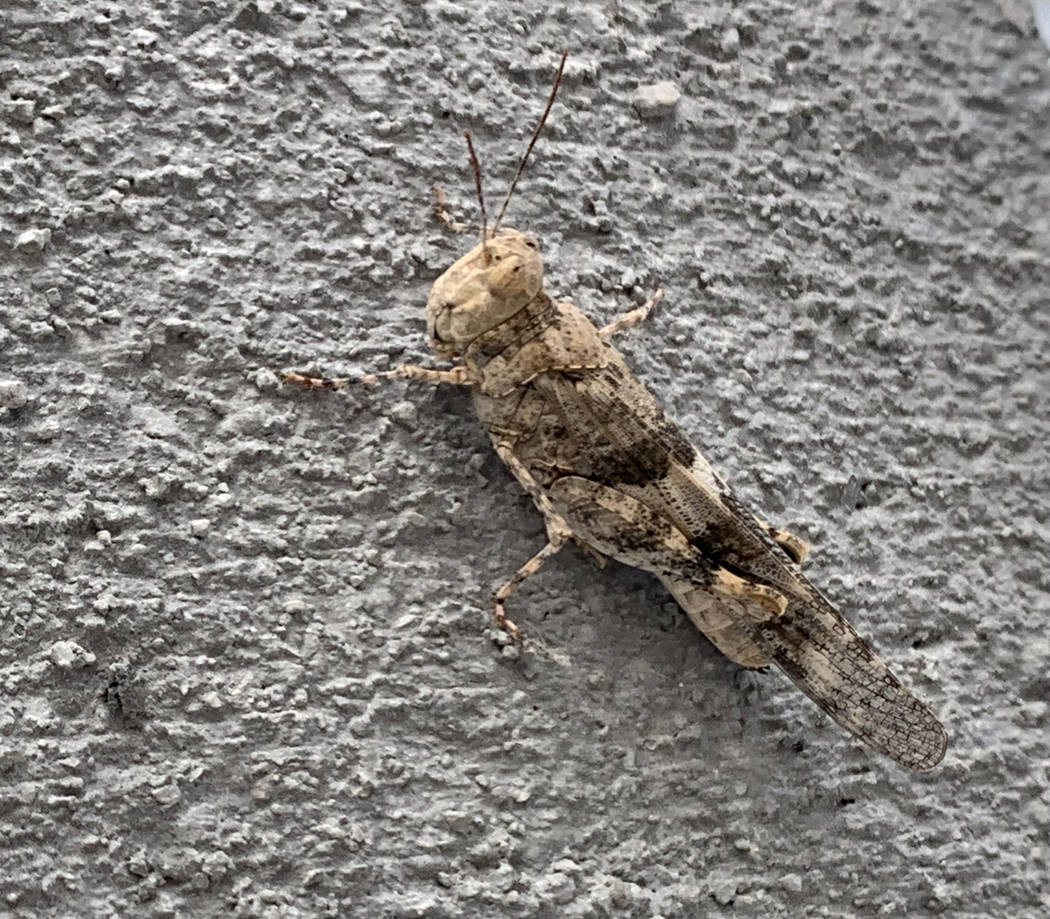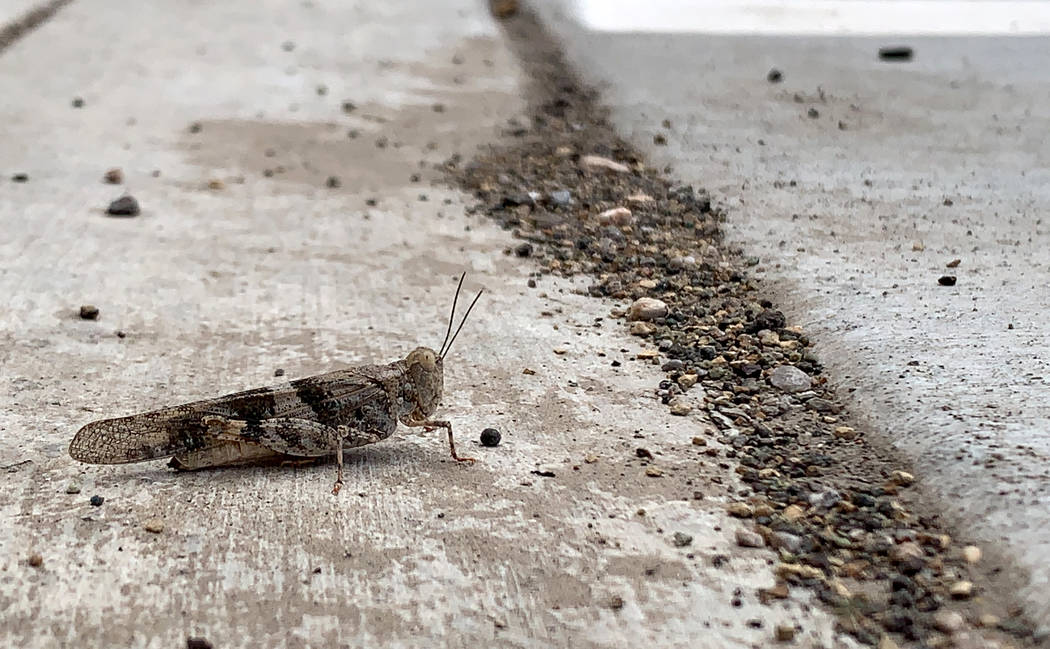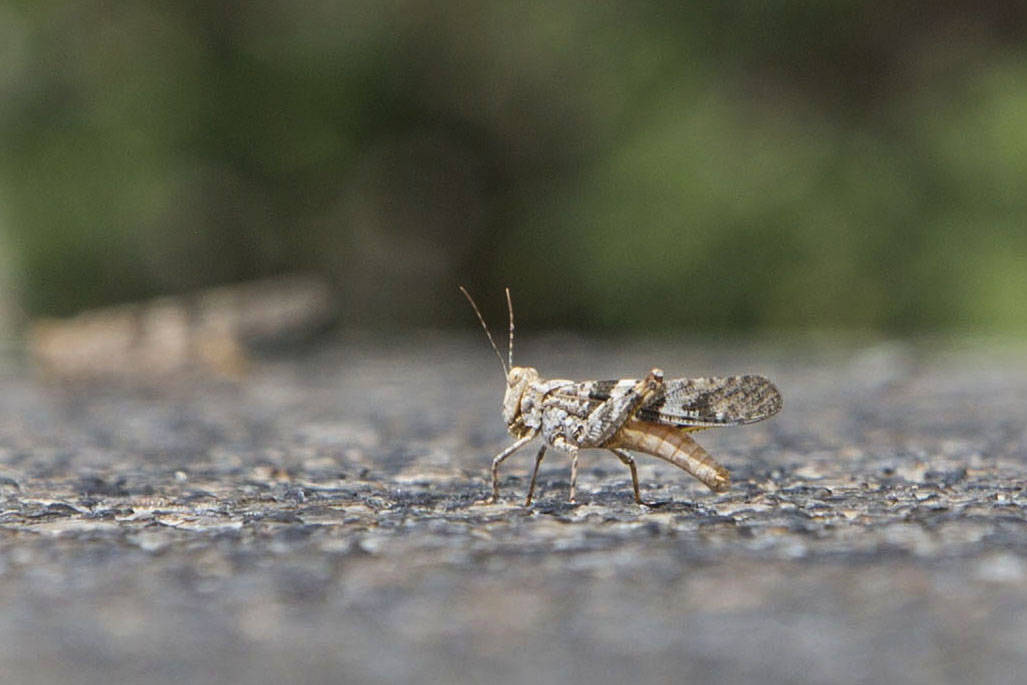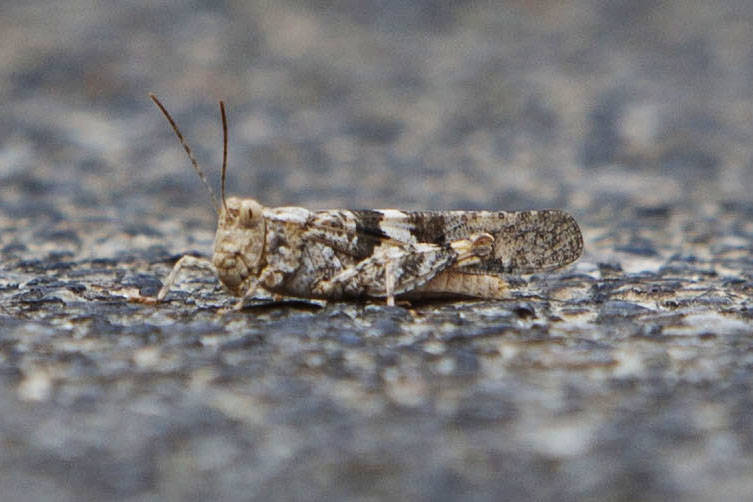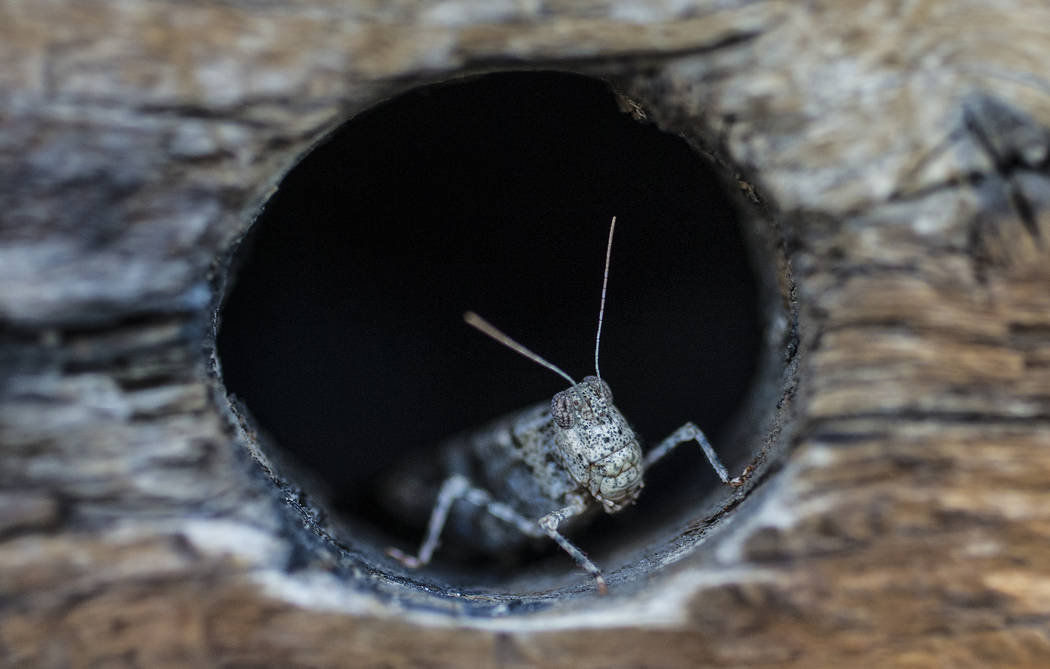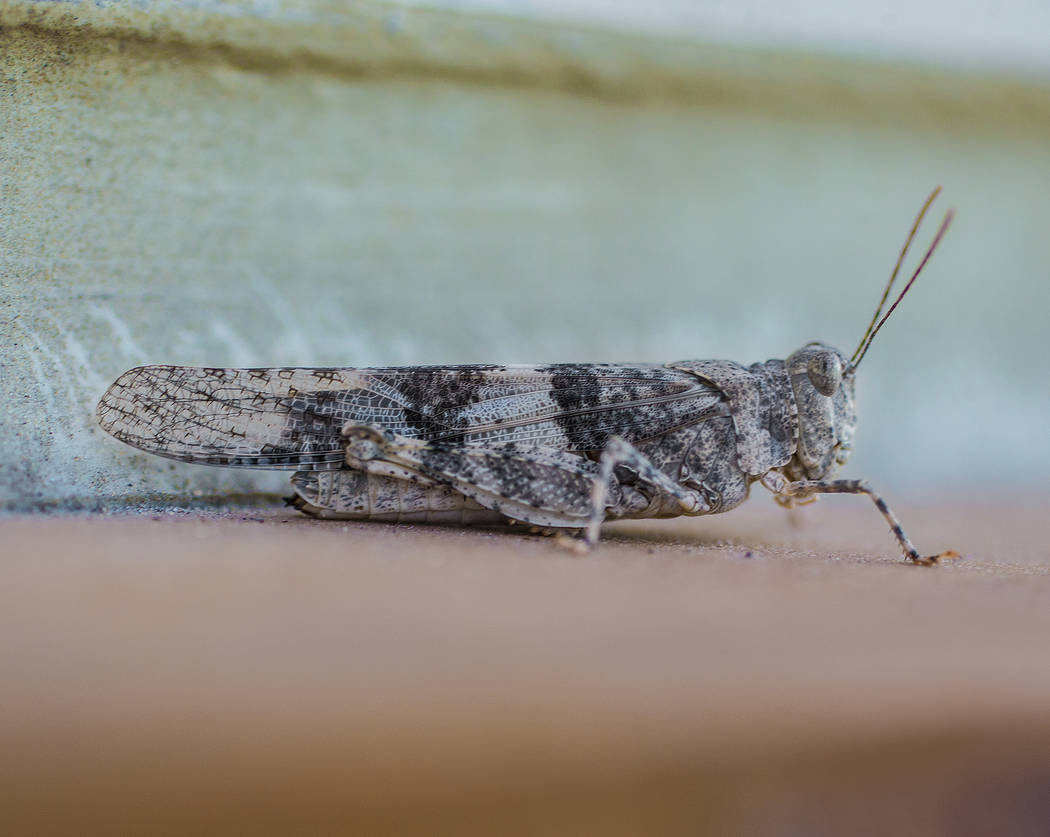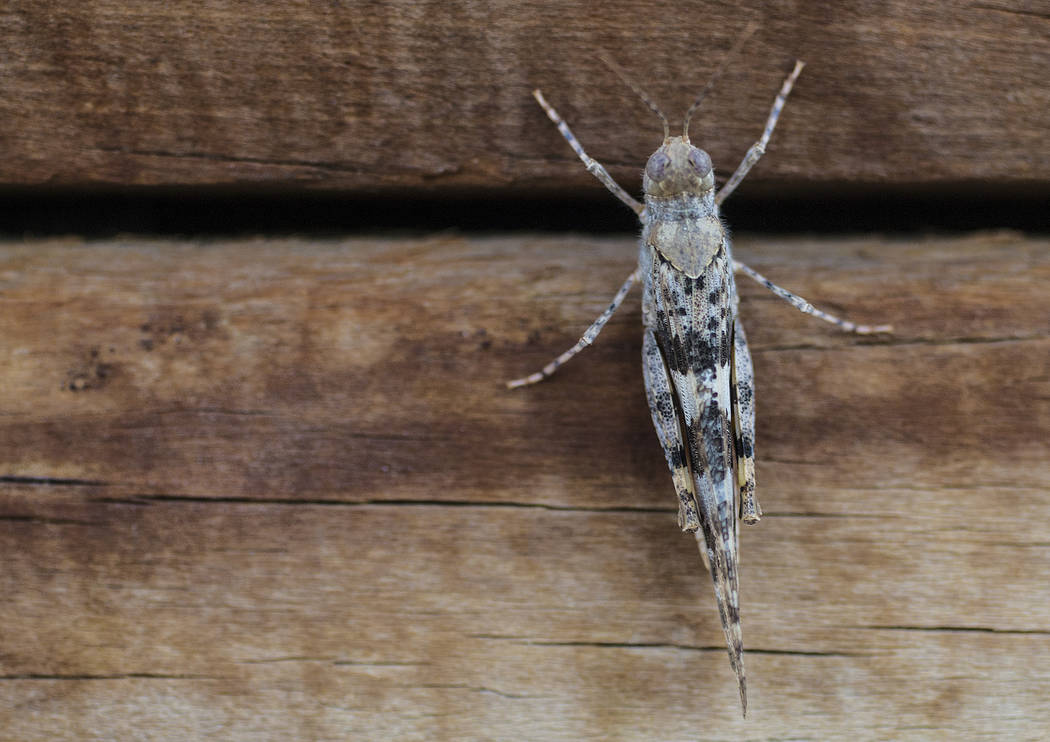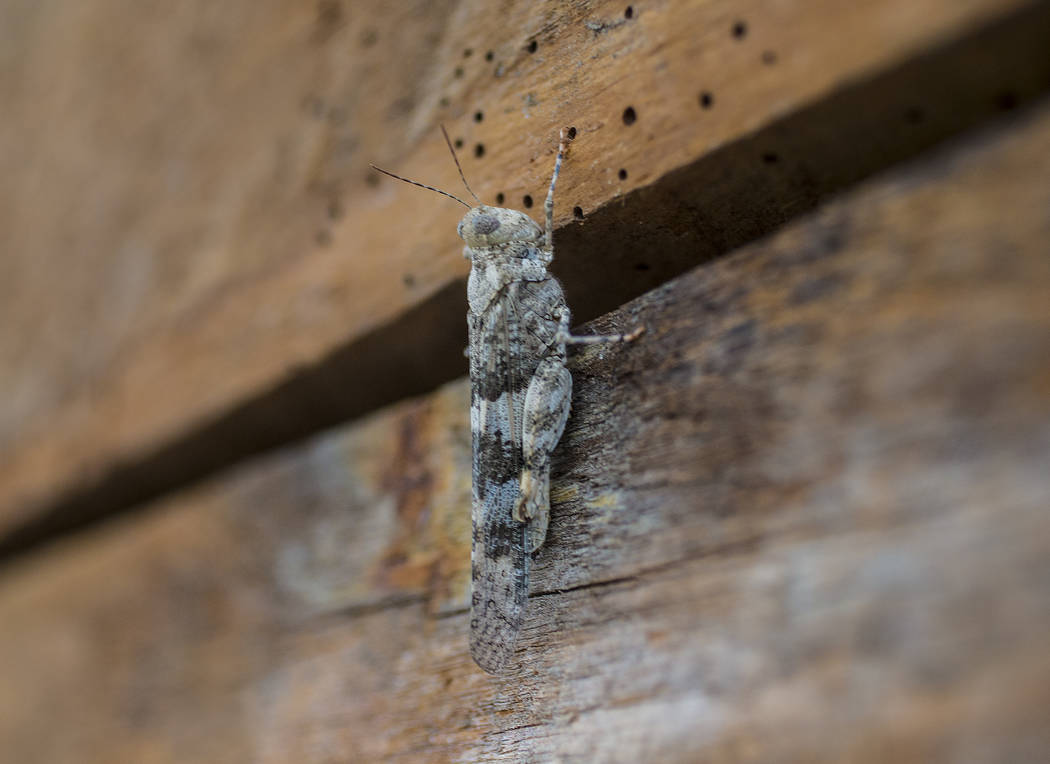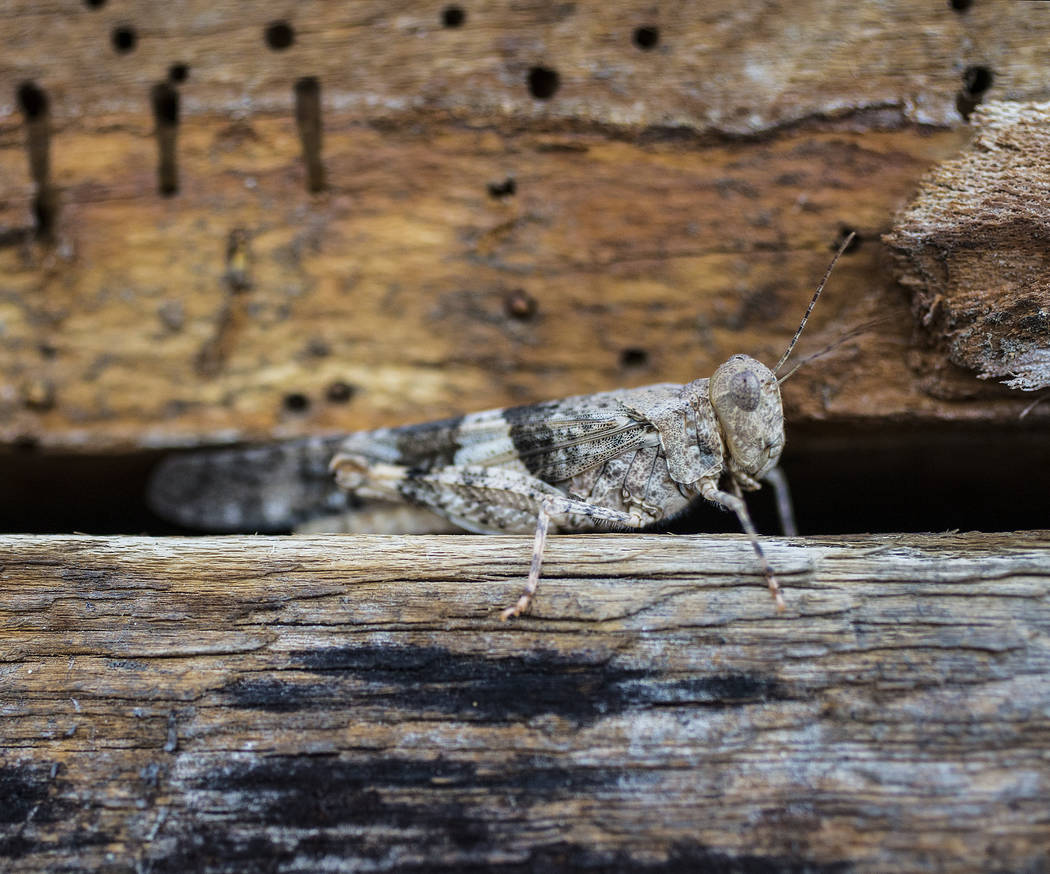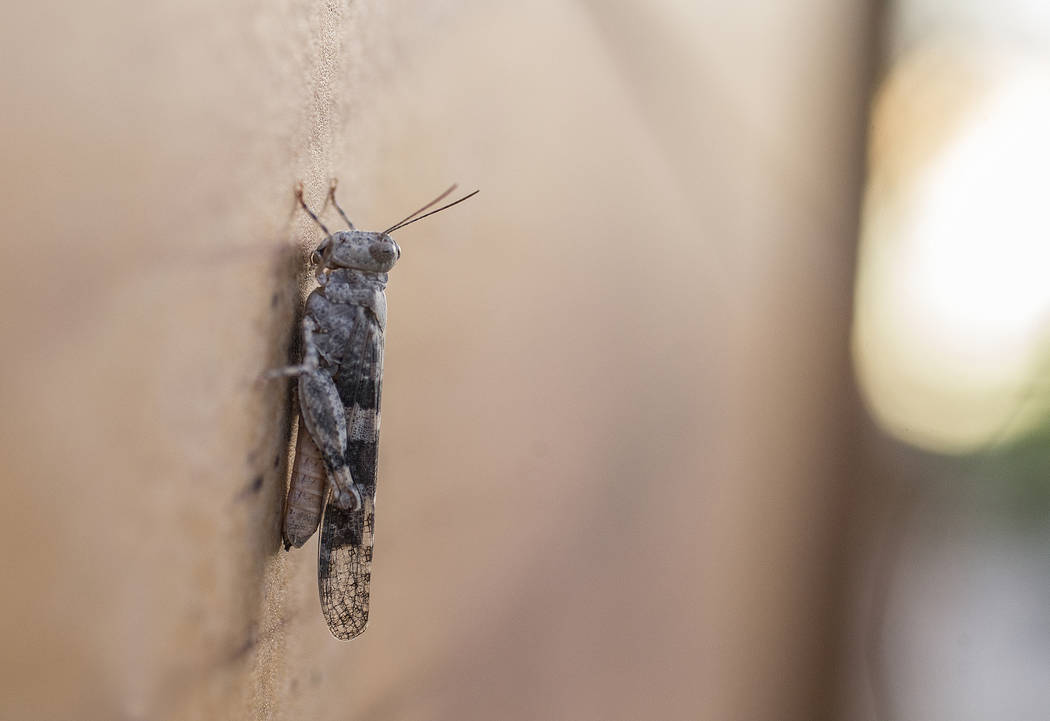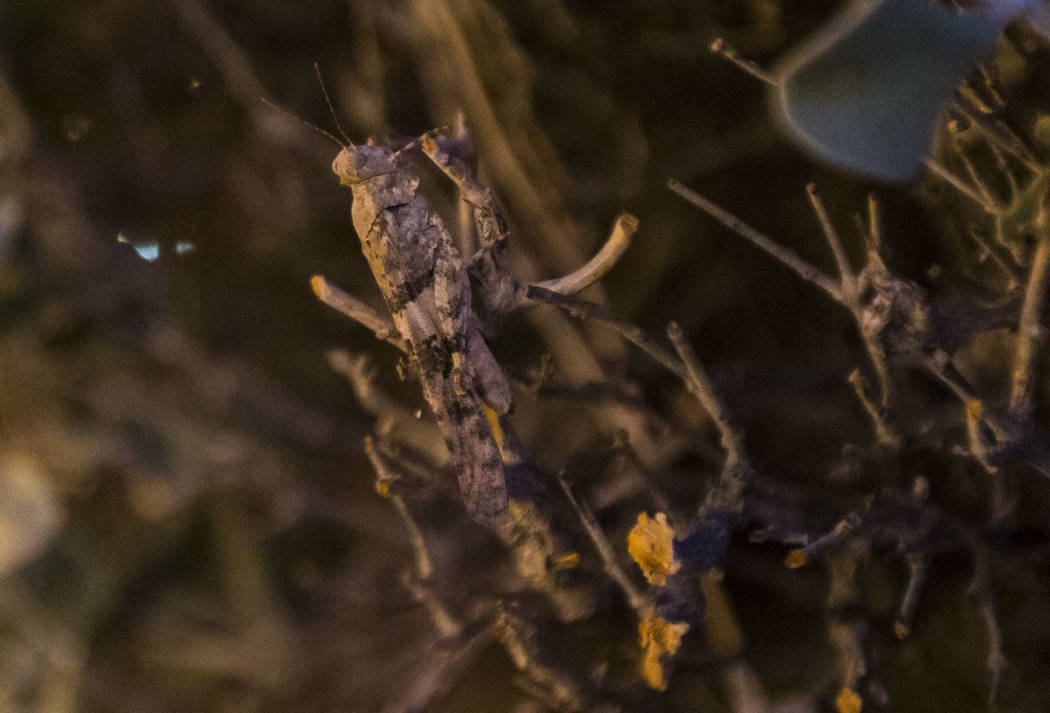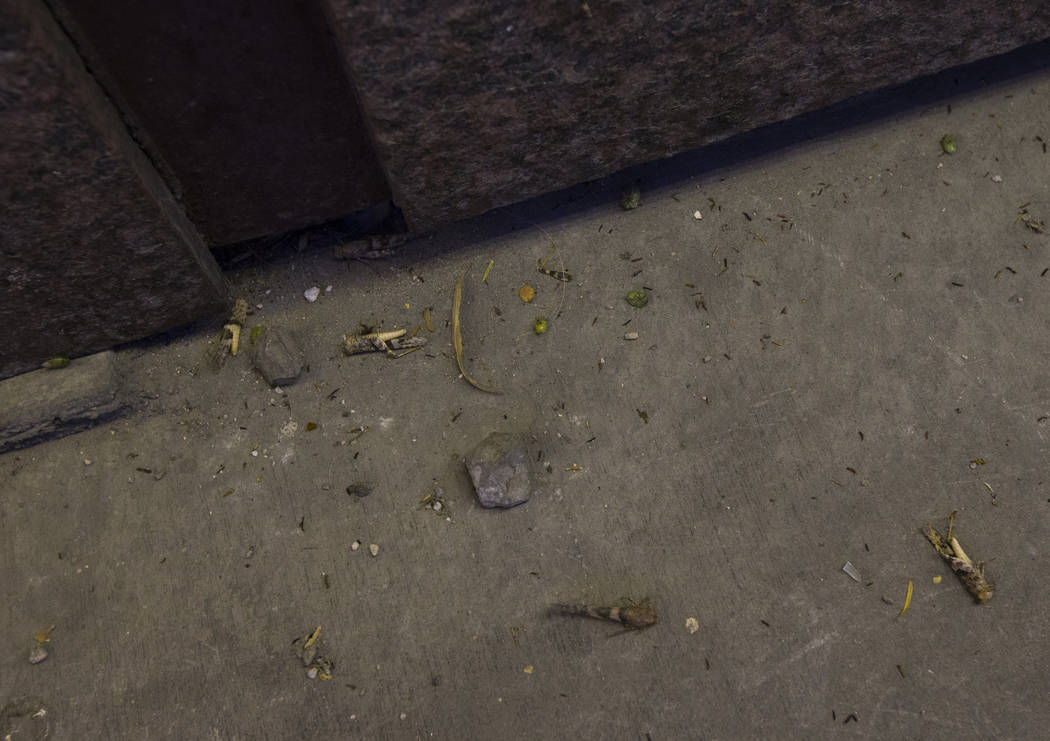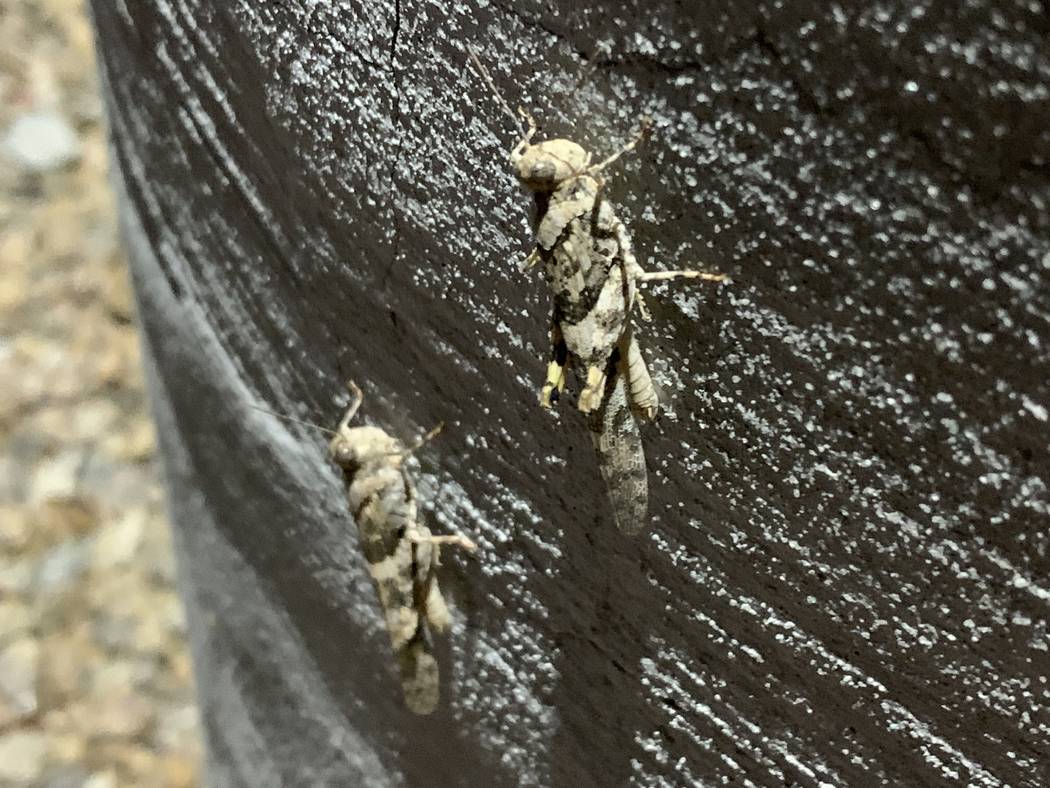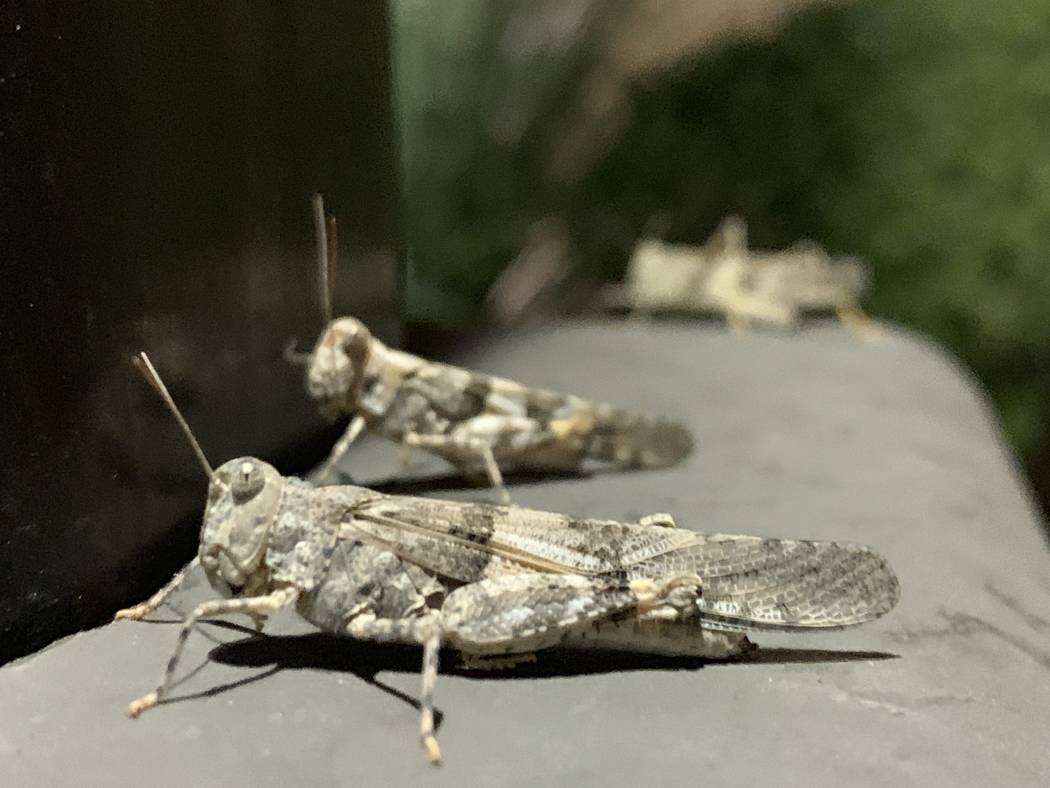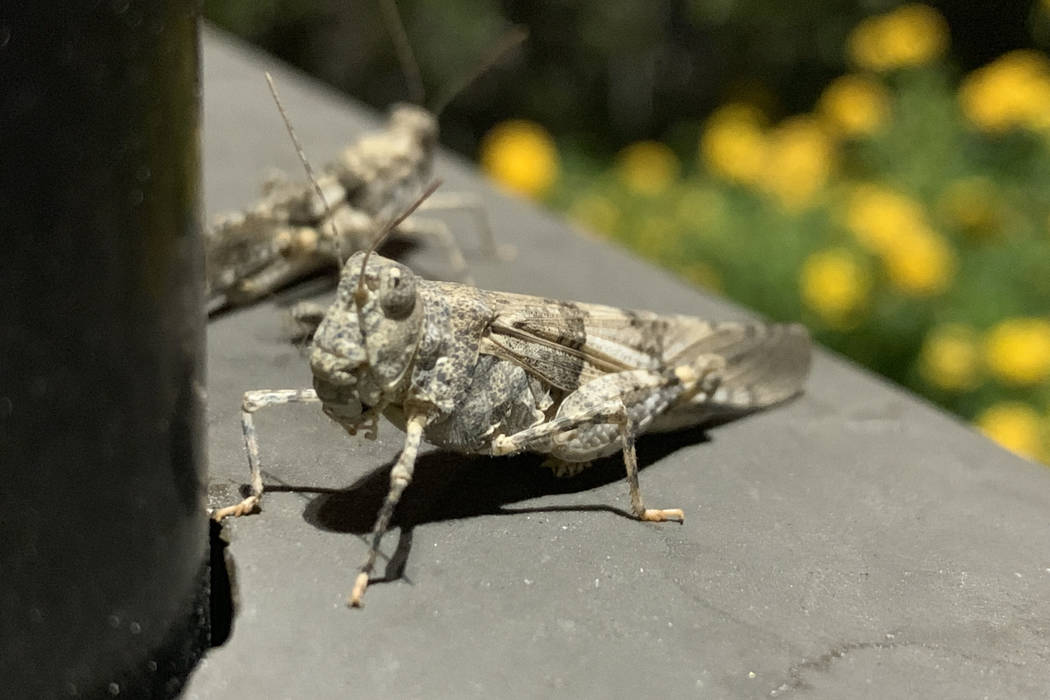Grasshoppers invade Las Vegas Valley after unseasonably wet spring
It’s not just your neighbor’s yard that looks like a horror movie. There really are more grasshoppers in the Las Vegas Valley this week.
After an unseasonably wet winter and spring, pallid-winged grasshoppers have infested the valley as they migrate as far north as central Nevada from Laughlin and northern Arizona, the Nevada Department of Agriculture confirmed at a news conference Thursday.
The valley has recorded 4.63 inches of rain this year, said meteorologist Alex Boothe of the National Weather Service. The annual average is 4.19 inches, and this year nearly 4 inches had fallen before the end of May.
This pit stop in a metropolis like Las Vegas during migration puts the grasshoppers a bit out of their usual stomping grounds, but they’ve visited a handful of times in the past 50 years, said Jeff Knight, the state entomologist for the Agriculture Department.
“They don’t carry any diseases. They don’t bite. They’re not even one of the species that we consider a problem,” Knight said. “They probably won’t cause much damage in a yard.”
The grasshoppers are all adults, measuring no more than 1.5 inches, but with wings that help them fly up to 10 feet high and end up 30 feet away, Knight said.
Knight estimates they’ll hop out of town within a few weeks, continuing north. In the meantime, residents can deter them by switching off ultraviolet lights outside, replacing them with a low UV or amber light instead. But Knight said the easiest way to get rid of them is to “just scare them out of the way.”
The grasshoppers likely will mate while they’re in town, but Knight said conditions here “aren’t right” to help the nearly 100 eggs a grasshopper lays to make it to hatching season in fall. Without an ample food supply, and heavy rain, the offspring will die before reaching maturity.
There’s no way to estimate the grasshopper population in Las Vegas, Knight said. But people interested in seeing more of them “can always go out in the desert. It’s a common desert species.”
Contact Sabrina Schnur at sschnur@reviewjournal.com or 702-383-0278. Follow @sabrina_schnur on Twitter.



